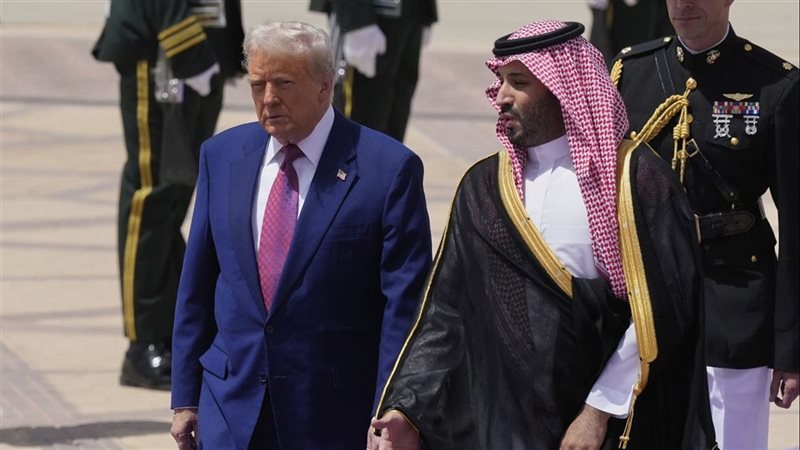Does Washington Have the Leverage to Enforce Peace in Sudan?

Washington is moving with an unusually heavy political hand on the Sudan file. Yet the U.S. initiative—described as “the most serious” since the outbreak of the war—has faced a dual dilemma from the outset: the complex, intertwined internal dynamics and the absence of binding mechanisms to ensure compliance with any proposed ceasefire.
U.S. adviser Massad Boulos told Al Jazeera that both sides have responded positively. However, Washington’s optimism clashes with a fragile Sudanese reality, where 30 months of fighting have deeply eroded trust. In this environment, verbal commitments carry little weight without a clear system of accountability and guarantees—elements that were missing in previous negotiations.
Cameron Hudson, adviser to the former U.S. envoy to Sudan, highlighted this challenge on the program Beyond the News. He argued that past initiatives failed not for lack of political will, but because there was no party capable of enforcing compliance. From his perspective, direct involvement by the U.S. President provides the current initiative with momentum that has been absent for years—but it does not eliminate the core dilemma: mutual distrust between the two sides.
This assessment aligns with the view of Dr. Fathi Abu Ammar, editor-in-chief of Al-Wasat newspaper. While he considers the Rapid Support Forces (RSF) to be “most receptive” to the U.S. initiative, he emphasizes that this acceptance does not change a fundamental truth: a ceasefire in Sudan cannot hold without genuine international monitoring. Abu Ammar notes that prior experiences in Jeddah and beyond show that any ceasefire without enforcement mechanisms quickly becomes merely a pause to catch one’s breath, not a pathway to a political settlement.
A Conditional Ceasefire
The picture becomes even more complex when considering the stance of the military. Dr. Rashid Mohammed Ibrahim, a political analyst from Port Sudan, explains that the army views any ceasefire very differently. It does not reject the principle of a ceasefire, but considers it conditional on the RSF withdrawing from cities and surrendering heavy weapons.
According to him, this is less a negotiable term than a “safety barrier” to prevent a repeat of the scenarios seen in Al-Fashir and Khartoum.
These contrasting perspectives illustrate that the challenge is not in drafting a ceasefire, but in the absence of even minimal mutual trust. While Washington speaks of “urgent humanitarian aid,” the army fears any ceasefire that allows its opponent to reposition, while the RSF worries that a ceasefire could be exploited to reorganize the military against it.
The external factor further complicates matters. The U.S. administration mentions coordination with the Quartet, Qatar, and Turkey, but multiple diplomatic channels do not change the fact that influential regional actors maintain differing relationships with the conflict parties. Abu Ammar emphasizes that any effort that does not touch the “sources of support” will have limited impact, as the continuation of the war is tied to cross-border funding, armaments, and political backing.
Conversely, Hudson argues that Trump—if he chooses—could impose a new deterrence balance. The RSF is designated a terrorist organization by Congress, while the army relies on state legitimacy and international authorization. This duality gives Washington an opportunity to craft a “carrot-and-stick” equation that could compel both sides to comply, at least temporarily. Yet he also notes that, to date, the U.S. administration has offered no clear accountability mechanisms, leaving commitments largely matters of intention rather than measurable guarantees.
Influential Ground Developments
On the ground, developments remain a decisive factor in shaping the initiative’s trajectory. The army is making gains in Kordofan and west of Al-Obeid, destroying convoys arriving from eastern Libya, while the RSF continues to consolidate its positions inside cities.
As long as this geographic imbalance persists, achieving a stable ceasefire is nearly impossible, as each side fears giving its opponent operational space.
Still, Washington does not appear ready to concede potential failure. Boulos speaks confidently of a “transitional phase” accompanying the ceasefire from the start, yet the lack of a clear vision for the components of this phase leaves the initiative vulnerable to the same obstacles that derailed the Jeddah platform.
Sudan today is more than a country divided along military lines; it is a tangled web of overlapping influence, where international and regional interests intersect with tribal and political calculations. The stakes are existential: the army seeks to restore the state, the RSF pursues political legitimacy it does not possess, and the United States aims to halt the humanitarian tragedy without engaging in the “reengineering” of the Sudanese state.
Observers note that increased U.S. involvement could create a new balance, provided two critical elements are present: clear enforcement guarantees and genuine regional consensus. Past Sudanese experiences confirm that any settlement without strong international sponsorship remains a temporary declaration of intent.
Unless Washington can devise a formula that obliges both sides to cease fire and provides Sudanese citizens with a trustworthy path forward, its initiative risks becoming just another link in the chain of efforts that have failed to alter the prolonged tragedies in Sudan.
